
Post-Impressionism - II
Georges Seurat
1859–1891
Georges Pierre Seurat (2 December 1859 – 29 March 1891) was a French post-Impressionist artist. He devised the painting techniques known as chromoluminarism and pointillism and used conté crayon for drawings on paper with a rough surface.
Seurat's artistic personality combined qualities that are usually thought of as opposed and incompatible: on the one hand, his extreme and delicate sensibility, on the other, a passion for logical abstraction and an almost mathematical precision of mind. His large-scale work A Sunday Afternoon on the Island of La Grande Jatte (1884–1886) altered the direction of modern art by initiating Neo-Impressionism, and is one of the icons of late 19th-century painting.

Portrait of Georges Seurat - Charles Maurin

Le Chahut
1889–90

Bathers at Asnières
1884

A Sunday Afternoon on the Island of La Grande Jatte
1884–1886

Jeune femme se poudrant (Young Woman Powdering Herself)
1888–1890

The Circus
1891

Circus Sideshow (Parade de Cirque)
1887–88

The Seine and la Grande Jatte – Springtime 1888

Models (Les Poseuses)
1886–1888

Gray weather, Grande Jatte
1888
Paul Signac
1863–1935

Paul Victor Jules Signac (11 November 1863 – 15 August 1935) was a French Neo-Impressionist painter who, with Georges Seurat, helped develop the artistic technique Pointillism.
Paul Signac was born in Paris on 11 November 1863. Signac studied architecture until, at the age of 18, he decided to pursue a career as a painter after attending an exhibition of Claude Monet's work. He sailed on the Mediterranean Sea, visiting the coasts of Europe and painting the landscapes he encountered. In later years, he also painted a series of watercolors of French harbor cities.
Portrait of his wife, Berthe, painted at Saint-Tropez by Paul Signac, 1893, Femme à l'ombrelle (Woman with Umbrella), oil on canvas, 81 x 65 cm, Musée d'Orsay, Paris
In 1884 he met Claude Monet and Georges Seurat. He was struck by the systematic working methods of Seurat and by his theory of colors and he became Seurat's faithful supporter, friend, and heir with his description of Neo-Impressionism and Divisionism method. Under Seurat's influence he abandoned the short brushstrokes of Impressionism to experiment with scientifically-juxtaposed small dots of pure color, intended to combine and blend not on the canvas, but in the viewer's eye, the defining feature of Pointillism.

Portrait of Félix Fénéon
1890

Portrait of his wife, Berthe
Femme à l'ombrelle (Woman with Umbrella)
1893

Capo di Noli
1898

In the Time of Harmony: the Golden Age is not in the Past, it is in the Future
1893–95

Comblat le Chateau. Le Pré
1886

Place des Lices
1893

The Pine Tree at Saint Tropez
1909

Breakfast

Sunday
Henri de Toulouse-Lautrec
1864 - 1901
Comte Henri Marie Raymond de Toulouse-Lautrec-Monfa (24 November 1864 – 9 September 1901) was a French painter, printmaker, draughtsman, caricaturist and illustrator whose immersion in the colourful and theatrical life of Paris in the late 19th century allowed him to produce a collection of enticing, elegant, and provocative images of the sometimes decadent affairs of those times.
Born into the aristocracy, Toulouse-Lautrec broke both his legs around the time of his adolescence and, due to the rare condition Pycnodysostosis, was very short as an adult due to his undersized legs. In addition to his alcoholism, he developed an affinity for brothels and prostitutes that directed the subject matter for many of his works recording many details of the late-19th-century bohemian lifestyle in Paris. Toulouse-Lautrec is among the painters described as being Post-Impressionists, with Paul Cézanne, Vincent van Gogh, Paul Gauguin, and Georges Seurat also commonly considered as belonging in this loose group.

Henri de Touluse-Lautrec.

Portrait de Suzanne Valadon
1885

Portrait of Vincent van Gogh
1887

Equestrienne (At the Circus Fernando)
1888

La toilette
1889

At the Moulin Rouge
1890

La Goulue arriving at the Moulin Rouge
1892
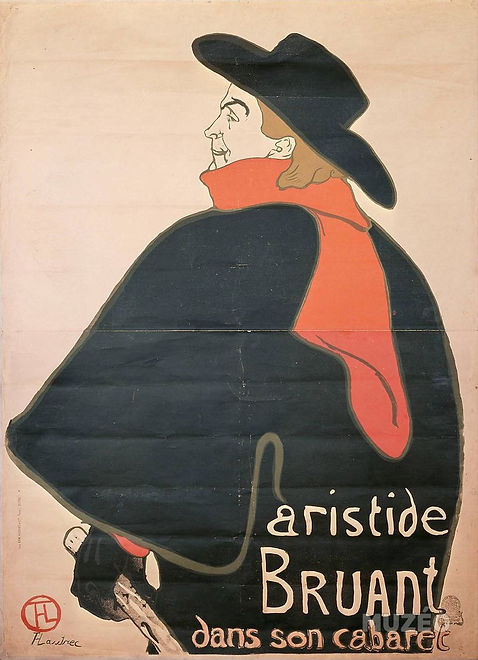
Aristide Bruant in his cabaret
1892

Portrait of Monsieur Delaporte at the Jardin de Paris
1893,

En la sala de la Rue des Moulins
1894

The Seated Clowness. From the portfolio Elles
1896

La inglesita del Star en El Havre
1899

Henri de Touluse-Lautrec.

Perfil de mujer

Woman Pulling on Her Stockings

Moulin Rouge: La Goulue
Welcome visitors to your site with a short, engaging introduction.
Double click to edit and add your own text.

Lady Clown Cha-U-Kao
1895
.jpg)
Cha-U-Kao by Maurice Guibert (1890

La Clownesse Cha-U-Ka-O im Moulin Rouge
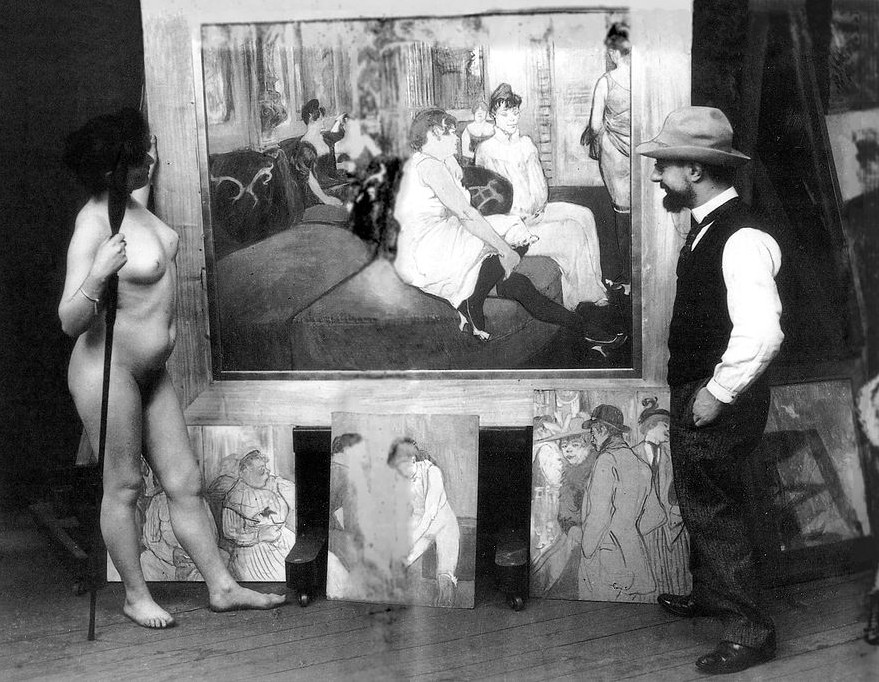
Henri de Toulouse-Lautrec with a nude model in his studio, by Maurice Guibert c. 1895
Welcome visitors to your site with a short, engaging introduction.
Double click to edit and add your own text.
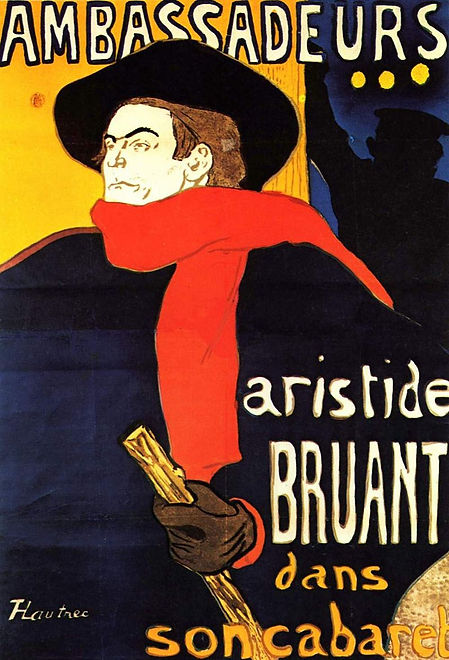
Henri de Toulouse-Lautrec: ARISTIDE BRUANT. 1892.

Poster portrait

Poster portrait


Poster portrait
Poster portrait
MADEMOISELLE GUILBERT ENTERS
Yvette Guilbert made her debut, in 1892, at the Concert-Parisien, a cabaret in the Saint-Denis suburb, and became the darling of Paris within eight days. She was twenty-three years old, with black-gloved, predatory hands and a sphinx-like body. Henri de Toulouse-Lautrec depicted her in drawings, paintings, and posters. He conveyed the intangible: the way the great entertainer inimitably articulated each syllable, aimed directly at each listener, from her tongue, from her throat. His drawing describes not so much what he sees as what he writes with a quick gesture: some traits, a spot of color on the canvas or on paper—the work is done.
There is an affinity between the cutting voice of Yvette Guilbert and the cutting line of Toulouse-Lautrec. Mademoiselle Guilbert greets the public, her dress and curtain in green, her hair red, her face barely sketched in. It is a Lau-trec masterpiece. But when the singer saw the album of sixteen lithographs, with text by Gustav Geffroy, she saw herself as ugly and she considered suing the artist for damages. She changed her mind.
Yvette Guilbert (born Emma Laure Esther Guilbert, 20 January 1865 – 3 February 1944) was a French cabaret singer and actress of the Belle Époque.


YVETTE GUILBERT.
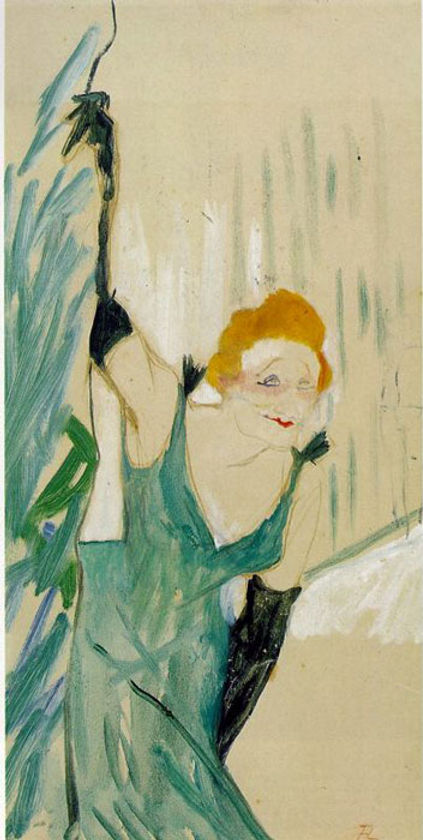
YVETTE GUILBERT GREETING HER AUDIENCE.
1894.

YVETTE GUILBERT.

Poster for masked ball in Paris Casino with portraits of Cha-u-kao and Yvette Guilbert Les Redoutes du Casino de Paris
Suzanne Valadon
1865 – 1938
Death of Suzanne Valadon
Although she had long lived in Montmartre, Suzanne Valadon, who died April 7 in her seventy-third year, retained an almost virile robustness from her peasant origins, as well as her love of nature and flowers. A model and close friend of Puvis de Chavannes,
Henner, and Renoir, and the mistress of Toulouse-Lautrec, the mother of Maurice Utrillo was encouraged to paint by these artists and by Apollinaire, who admired her blasé nudes. Her best friend, Dégas, did not hesitate to testify that “this devil is a genius at drawing."

Suzanne Valadon - Self-Portrait
Suzanne Valadon
(23 September 1865 – 7 April 1938) was a French painter who was born Marie-Clémentine Valadon at Bessines-sur-Gartempe, Haute-Vienne, France. In 1894, Valadon became the first woman painter admitted to the Société Nationale des Beaux-Arts. She was also the mother of painter Maurice Utrillo.
Valadon spent nearly 40 years of her life as an artist.The subjects of her drawings and paintings, such as Joy of Life (1911), included mostly female nudes, portraits of women, still lifes, and landscapes. She never attended the academy and was never confined within a set tradition or style of art. Despite not being confined to any tradition, she shocked the artistic world by painting male nudes as well as less idealized images of women in comparison to those of her male counterparts.
She was a model for many renowned artists. Among them, Valadon appeared in such paintings as Dance at Bougival (1883) and Dance in the City by Pierre-Auguste Renoir (1883), and Suzanne Valadon (1885) and The Hangover (Suzanne Valadon) (1887 - 1889) by Henri de Toulouse-Lautrec.

Suzanne Valadon - Self-Portrait

Reclining Nude
Suzanne Valadon
1928

Suzanne Valadon - Young Girl Bathing

Suzanne Valadon - Miss Lily Walton
1922

Suzanne Valadon - Nu
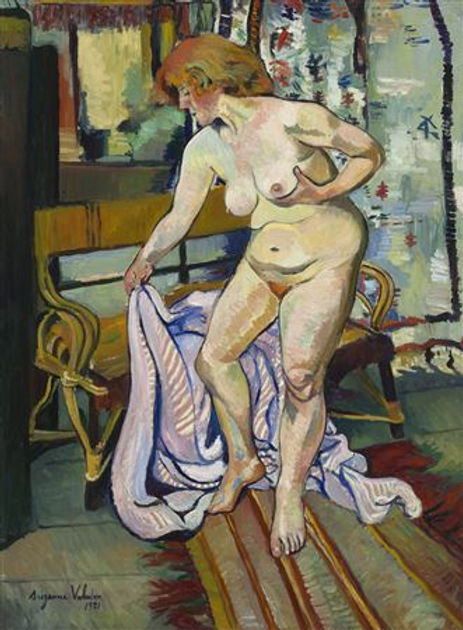
Suzanne Valadon - Nu
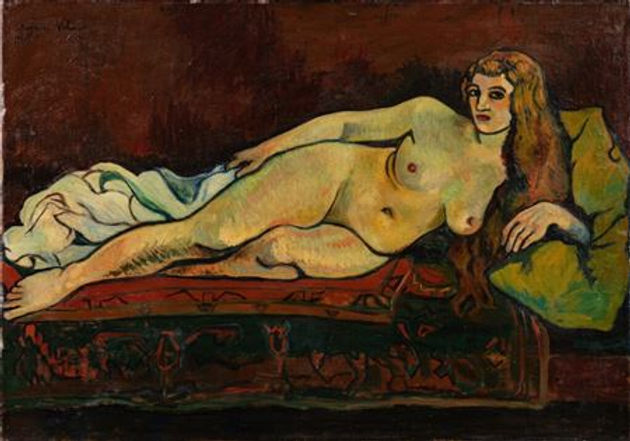
Suzanne Valadon - Nu

Suzanne Valadon - Nu
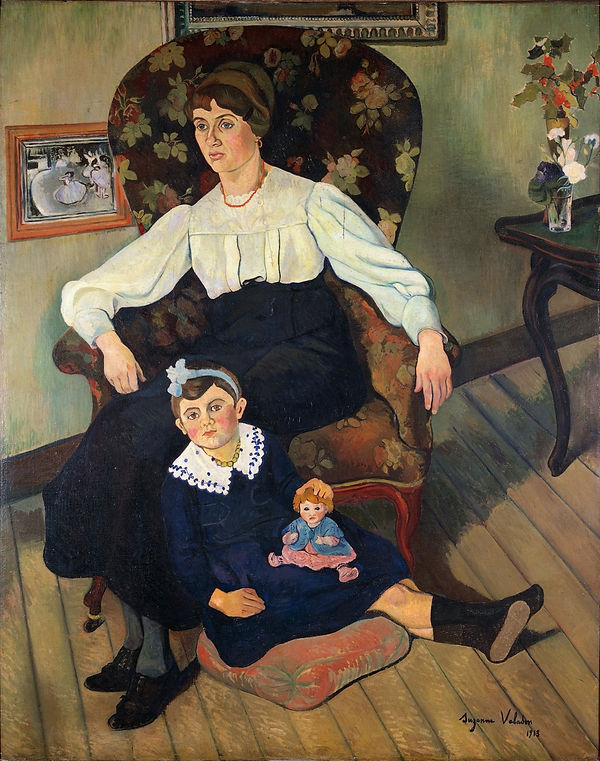
Suzanne Valadon, ‘Marie Coca and Her Daughter Gilberte,’ 1913
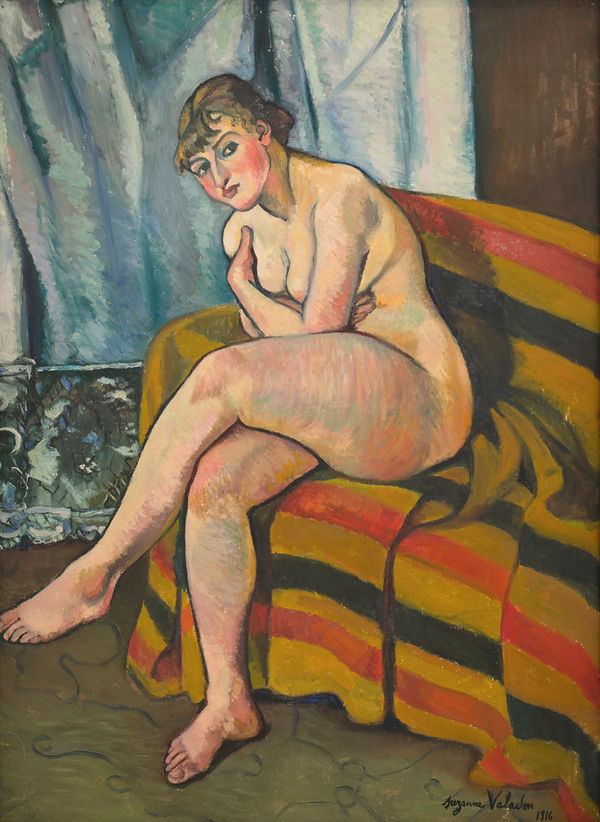
Suzanne Valadon, ‘Nude Sitting on a Sofa,’ 1916
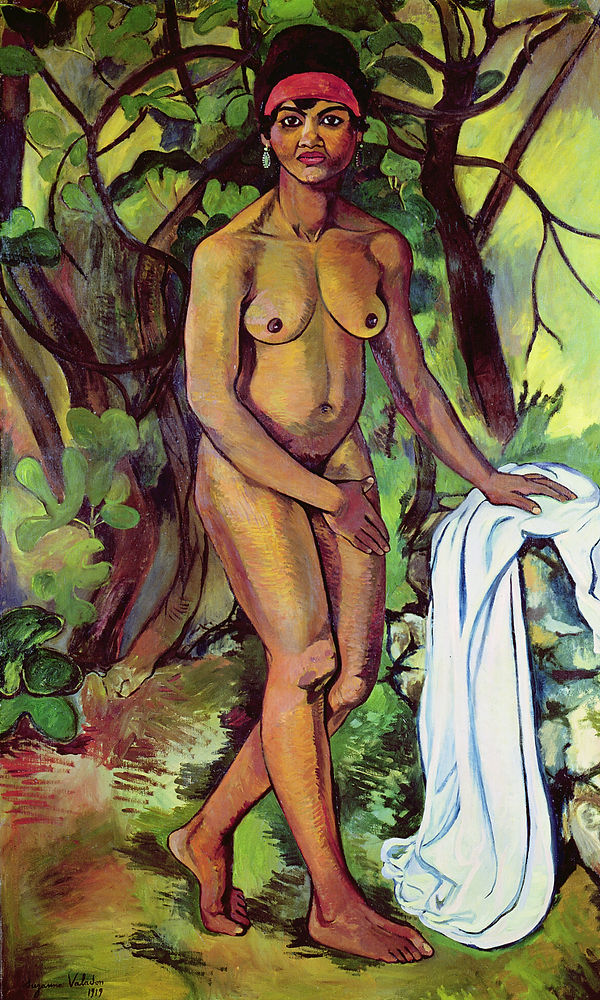
Suzanne Valadon, ‘Black Venus,’ 1919

Suzanne Valadon, Seated Woman Holding an Apple, 1919

Suzanne Valadon - Young Girl in Front of a Window, 1930

Suzanne Valadon - The Blue Room (La chambre bleue), 1923

Suzanne Valadon, Nude on a Red Sofa, 1920
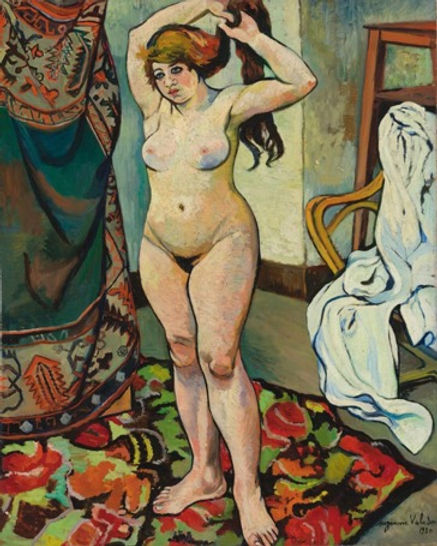
Suzanne Valadon, Gilberte Nude Combing Her Hair, 1920

Suzanne Valadon - Flowers on a Round Table, 1920

Suzanne Valadon - Nudes, 1919

Adam and Eve, by Suzanne Valadon, 1909

Suzanne Valadon - Portrait d'Erik Satie
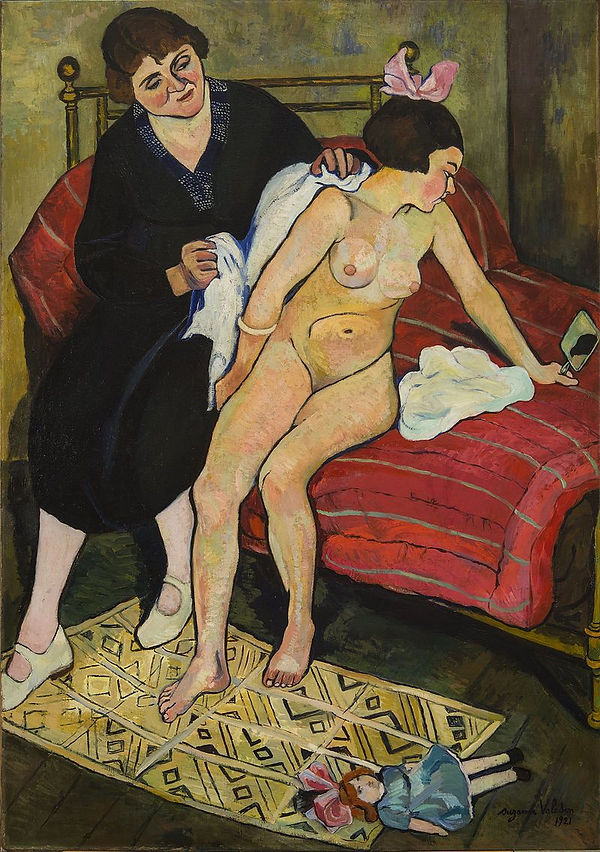
The Abandoned Doll (1921), by Suzanne Valadon

Portrait of the painter Maurice Utrillo. (1921), by Suzanne Valadon

Casting the Net (1914), by Suzanne Valadon

Suzanne Valadon - Joy of Life